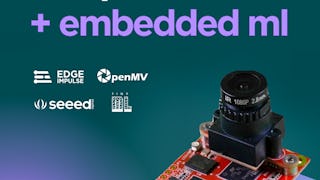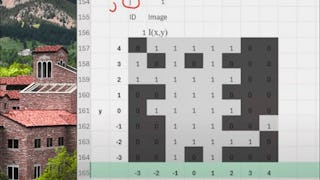Unlock the power of computer vision to add intelligence to images and videos!
This course equips you with practical skills to understand and apply computer vision (CV)—a rapidly growing branch of AI and machine learning that drives innovations from self-driving cars to augmented reality. Through guided, hands-on labs using Python, Pillow, and OpenCV, you’ll perform essential image processing tasks such as filtering, enhancement, classification, and object detection—all within JupyterLab Notebooks for a seamless learning experience. By the end of the course, you’ll apply transfer learning with a pre-trained deep neural network to build an image classification model, experimenting with different hyperparameters to enhance its performance on a provided dataset. To take this, you need to have a foundational knowledge of Python, machine learning, and deep learning. In just a few weeks, you’ll learn to turn pixels into insights and launch your journey into AI-powered visual intelligence. Enroll today and start creating the future with computer vision!

















